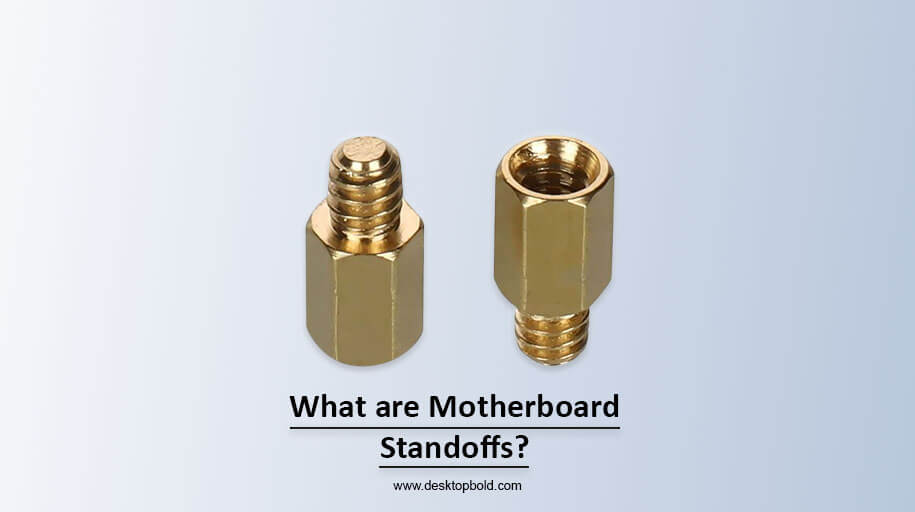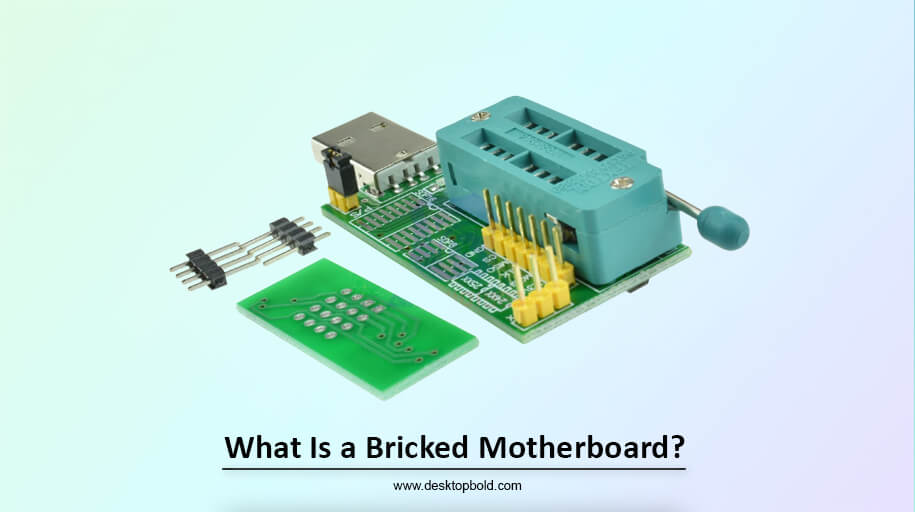If you’re building a gameplay PC, you should use motherboard standoffs to maintain the Motherboard at a protective measure and location inside the PC case. To secure the Motherboard to the inside of the case, it must be fitted into place at various points, and these screw slots are located in standoffs that fit into the motherboard box. Damage to the CPU can be avoided by keeping it from lying firmly on the case. Standoffs can be easily installed, but you must ensure that they are inserted into the spaces on your Motherboard that are designed to accommodate their size and form.
If you find this confusing or complicated, don’t worry; I will give a comprehensive guide on what are Motherboard Standoffs. Keep reading to get complete information.
What are Motherboard Standoffs? [Answered]
Tiny standoffs called “motherboard standoffs” are used to maintain the Motherboard at an angle and away from the motherboard slot in a computer case. The processor has energy flowing through it, so it must be protected from the case. To avoid this, standoffs separate the CPU from the case, providing a protective barrier. Additionally, they help maintain the stability of your Motherboard.
Standoffs must be inserted in small hole openings on the Motherboard. These are protected openings that give the standoffs a solid point of interface. Putting the standoffs on the Motherboard is as easy as sliding them into the proper slots. The Motherboard is then attached to the standoffs with screws.
Standoffs are helpful for holding the Computer in place and as binding locations. If passive energy accumulates on the Motherboard, it can securely dissipate through the standoffs, into the case, and out of the power supply to the ground.
Why are Motherboard Standoffs necessary?
It would be best to have standoffs for your Motherboard to ensure its stability and security. If your Motherboard comes into contact with the metal container without them, you risk electrical sparks and likely hardware failures.
Your Motherboard can be damaged, and your Computer can become unstable if you don’t use the right amount of standoffs and secure them correctly. Incorrect use of standoffs can damage your Motherboard and other components inside your computer case.
Do Motherboard Standoffs Come With Motherboards?
Standoff screws aren’t typically included with a motherboard purchase, but screws for other discs may be. The computer case, not the Motherboard, determines the sort of standoff screws you’ll need.
Therefore, standoffs and screws are usually provided with the PC case instead of coming with the Motherboard. Buying a Computer case will come with a bag or package containing several standoffs and similar screws.
You could use either ‘6-32 UNC’ or ‘M3’ screws in this. You can find that information in the user manual if you need to change the screws but aren’t optimistic about what kind your case requires.
How to Install Motherboard Standoffs
So, I am going to assume that you have gained complete knowledge on what are Motherboard Standoffs by reading the guide given above. Now, It’s time to discuss How to install Motherboard Standoffs. Although installing motherboard standoffs is a simple task, it must be performed accurately to ensure your system’s continued security and stability.
1. Check your Motherboard’s compatibility.
It’s crucial to know first what kind of Motherboard you have. Check the manual that came with your Motherboard or search for a model number written on the board to locate this data.
The installation of the standoffs in your computer case will depend on the form factor of your Motherboard, which is the general size and structure of the board. Micro-ATX, Mini-ITX, and ATX are the three most popular sizes.
Standoff positions vary depending on the form factor but don’t worry because most cases come with adjustments for the most common setups. Motherboard trays typically have labels like “M” for Mini-ITX that indicate the type of Motherboard they can support.
Refer to your case manual, which should include instructions for installing standoffs for various motherboard form factors if unsure where to place them.
2. Screw in the Standoffs
Removing all the wires from the computer case will help you determine where to place the screws that hold the Motherboard. As a result, you’ll have more space to move. Next, place your Motherboard over the surface bracket and find the screw holes. Determine if the openings connect to suitable points on the tray for screw attachment.
The standoffs can be installed after the proper screw placements have been determined. Simply drop them into the appropriate holes on the tray and screw them on with your fingers. You must avoid applying too much power, as this could damage the Motherboard or break the standoffs. Once the standoffs are in place, the Motherboard can be fastened with screws.
3. Mount your Motherboard
Make sure there are no wires on the standoffs where you intend to install your Motherboard before you try to do so. It would help if you didn’t have to do anything special to attach the standoffs to your motherboard box; they’ll come pre-installed. The next step is to use the adjustment pin that came with your motherboard box to line up your Motherboard with the standoff opening in the middle of your Motherboard. Ensure the other standoff holes align with the standoffs you’ve fitted before gently lowering your Motherboard onto this pin. After installing your Motherboard onto the standoffs, please shake it slightly to ensure it is properly fixed.
4. Screw the Motherboard Down
When the Motherboard is in place on the standoffs, you can use the provided screws to fix it. Ensure the screw tips are aligned with the Motherboard’s surface and tight enough to hold it securely but not too close, or the Motherboard could be damaged. Be careful not to harm the Motherboard as you tighten the standoff screws.
Conclusion
In conclusion, what are Motherboard standoffs and How to install them are pretty confusing. So, the article mentioned above has concluded that: A common mistake among new PC builders is the installation of motherboard standoffs. These standoffs prevent a short circuit between the Motherboard and the case.
Computer cases typically include standoffs compatible with the fixing slots on your Motherboard. Installing the standoffs is not an additional phase while building your Computer but a necessary one.
Aligning the standoffs with the attachment slots on your Motherboard is a straightforward procedure that can be guided by the manual that comes with your Computer case. However, care must be taken when working with electricity during Computer setup.
Frequently Asked Questions
Are there different types of motherboard standoffs for different motherboard sizes?
The screw hole designs on motherboard standoffs vary depending on the form factor of the Motherboard. When making purchases for your construction, be sure to pick a pair that is compatible with each other.
Can motherboard standoffs be reused when upgrading a motherboard?
If the motherboard standoffs are in good condition and are compatible with the new form factor, they can be reused during an update. If not, you might need to get some new standoffs.
Can additional motherboard standoffs be purchased separately if needed?
Additional motherboard standoffs can be purchased cheaply and conveniently from local or internet electronics shops, but they must be the proper size for your Motherboard.




